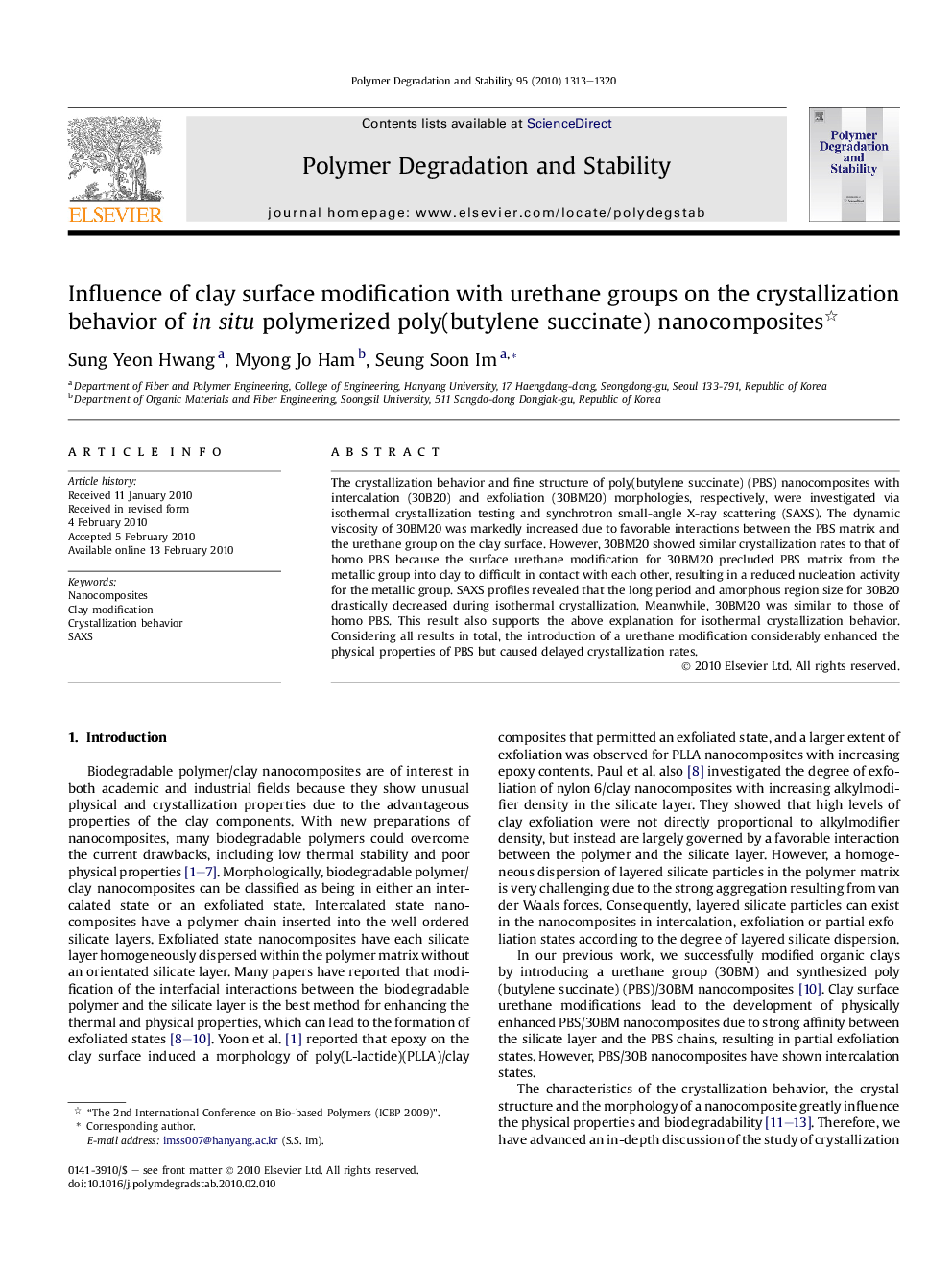| Article ID | Journal | Published Year | Pages | File Type |
|---|---|---|---|---|
| 5203373 | Polymer Degradation and Stability | 2010 | 8 Pages |
The crystallization behavior and fine structure of poly(butylene succinate) (PBS) nanocomposites with intercalation (30B20) and exfoliation (30BM20) morphologies, respectively, were investigated via isothermal crystallization testing and synchrotron small-angle X-ray scattering (SAXS). The dynamic viscosity of 30BM20 was markedly increased due to favorable interactions between the PBS matrix and the urethane group on the clay surface. However, 30BM20 showed similar crystallization rates to that of homo PBS because the surface urethane modification for 30BM20 precluded PBS matrix from the metallic group into clay to difficult in contact with each other, resulting in a reduced nucleation activity for the metallic group. SAXS profiles revealed that the long period and amorphous region size for 30B20 drastically decreased during isothermal crystallization. Meanwhile, 30BM20 was similar to those of homo PBS. This result also supports the above explanation for isothermal crystallization behavior. Considering all results in total, the introduction of a urethane modification considerably enhanced the physical properties of PBS but caused delayed crystallization rates.
